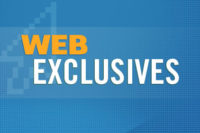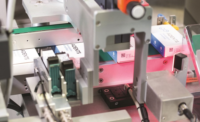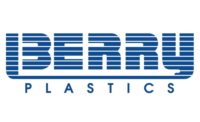Recent advancements in flexographic printing are making it a preferred option for brands marketing products as diverse as food, grass seed, wine and motor oil. With newfound abilities to produce top-quality images and graphics, deliver high consistency and repeatability from job to job, and enable quick, economical changeovers that support small-quantity runs, flexo now offers benefits that strongly appeal to both product marketing and purchasing management. Flexographic printing’s popularity is expected to increase exponentially as certain market segments expand and embrace flexo advantages.
In the past, flexographic printing was generally not associated with high-quality imagery. Rotogravure printing has long held that distinction, and deservedly so, as it was and remains a highly desirable printing option for achieving photographic quality printing. But a recent wave of innovations has vastly improved flexo print quality, broadened its applicability and given packagers a viable option to gravure printing. Accordingly, some package printers now offer both, giving customers a pair of photo-quality printing methods to meet specific needs.
Flexo is currently generating significant printing industry buzz due to its spate of improvements. Modern flexo presses are highly automated, with automatic impression and registration settings reducing human error. The latest prepress operations produce photopolymer flexo plates with flat-top dots rather than rounded dots. Flat-top dots produce sharper images and more legible text. In addition, there have been improvements in prepress operations, flexo anilox rollers and ink systems.
Collectively, these technical advances are known as high-definition flexography. HD flexo offers enhanced image resolutions of up to 4,000 pixels per square inch (compared with standard flexo’s 2,450 ppi2). Its benefits include detailed, photo-
quality graphics, highlights with smooth transitions and rich, saturated colors.
Superior Print Quality
Consumer goods companies are increasingly turning to HD flexo to produce eye-catching flexible packaging with potent shelf impact. Flexo has proved competitive with rotogravure, offset and other methods in many applications, including the packaging of premium-level products.
HD flexo also supports market needs for packaging uniformity. Consumer goods companies, which often use several printers for a single product line, insist that all products have the same appearance for branding and marketing purposes. The latest generation of flexo presses maintain high levels of consistency across an entire print run and from job to job. They even enable different printers working separately to achieve exceptionally similar results.
Fast Changeovers
New consumer packaging trends are another driver of advanced flexo’s growth. These include the trend toward increasing customization and more small-quantity runs. Flexo reduces the lead time between initial concept and start of printing and allows quick changeovers, lower prepress cost and makes small print runs more economical.
HD flexo also complements new developments in certain product sectors. Food and pet food companies, for example, often highlight their products’ freshness and natural ingredients. Flexo printing is also being used to create the appealing images found on many food/pet food packages.
The pet food industry in particular offers flexographic printing huge potential for growth. According to a report by Research and Markets, the North American pet nutraceuticals market was valued at over $1528.4 million in 2015 and is projected to grow significantly between the years 2015 and 2020. At the same time, consumer buying criteria for pet foods are shifting from cost and convenience to those that deliver muscle, cognitive and digestive health benefits. More pet owners are willing to pay a premium for higher grade pet foods.
Successfully marketing higher priced pet foods calls for printing that reflects the upgraded product’s quality. Flexo can satisfy this need with photo quality printing that can be supplemented with matte and gloss finishes to highlight logos and key marketing messages.
In the lawn and garden product sector, there is a move away from multiwall paper bags to flexible plastic packaging, which safely secures package contents and reduces damage during shipping. Here, HD flexography is often the preferred printing choice because of its photographic quality.
Extended Gamut Printing
The vibrancy of flexo printing can be enhanced by another advanced capability, seven-color extended gamut (EG) printing. EG printing supplements the four standard colors (cyan, magenta, yellow and black) with orange, green and violet. All printed images are made using a mixture of one or more of these seven colors.
Consider printing the image of an orange. In standard four-color printing, the colors cyan, magenta, yellow and black are mixed to create the image. With EG printing, in contrast, the printer has the color orange available and adds other colors as needed. In the case of a violet flower, the printer starts with violet and mixes in additional colors. The results are more vivid, life-like images.
Some companies are employing seven-color EG printing for production of their distinctive brand colors and logos, which are typically made using “spot” colors. Printers normally create spot colors individually with an ink supplier’s assistance. But it can be difficult to maintain consistency from printer to printer. One solution is to build brand colors and logos from a mixture of the seven EG process colors. This allows companies to standardize brand colors and achieve better color consistency.
Given its high quality, consistency and cost competitiveness, HD flexo printing with optional EG capability should prove an increasingly useful tool for marketers to showcase their goods on retail shelves while lowering package production costs.
Mondi in North America
www.mondigroup.com





